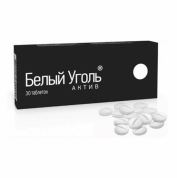Enterosorbent is used to remove excess gases, various toxins and microbes from the intestines that get there with food or water. The drug "Enterosgel" helps with poisoning, gastrointestinal infections. Modern intestinal sorbent is often prescribed as part of the complex treatment of allergies and parasitic diseases.
Material Content:
- 1 Composition and form of release
- 2 Pharmacological properties and pharmacokinetics
- 3 What is the drug prescribed for?
- 4 Enterosgel instructions for use for adults and children
- 5 Pregnancy and lactation
- 6 Special instructions for taking the drug
- 7 Drug Interactions with Other Drugs
- 8 Contraindications, side effects and overdose
- 9 Analogues of Enterosgel
- 10 Enterosgel or Polysorb - which is better?
Composition and form of release
"Enterosgel" - a white or translucent paste with a bluish tint, without taste and smell. The active ingredient of the product is an organomineral polymer, contains finely divided hydrosilicon methylsilicic acid (polymethylsiloxane polyhydrate). The paste is not soluble in water, juices, other liquids and foods.
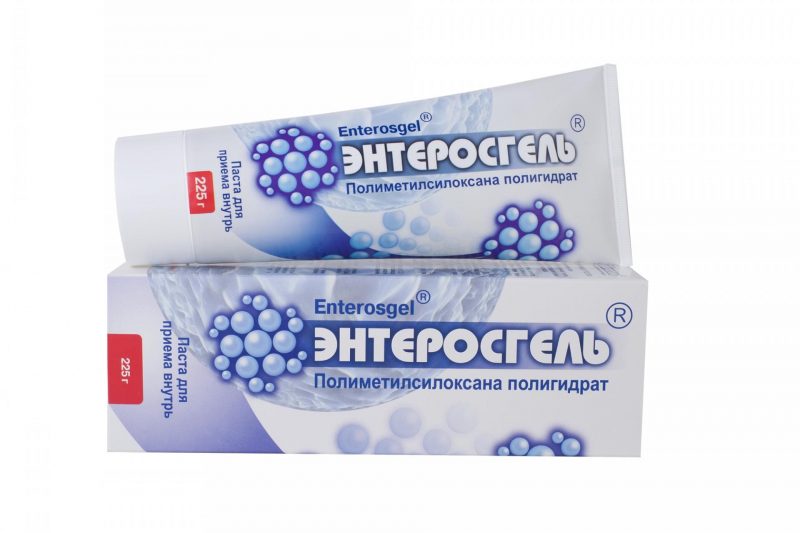
The main feature of the hydrogel is its numerous cavities for the absorption of toxins and allergens.
In Russia, Enterosgel is available in tubes and sachets for a single dose. Weight, respectively, 225 and 22.5 g. There are two varieties - sweet "Enterosgel" for children and tasteless pasta.
Pharmacological properties and pharmacokinetics
Methylsilicic acid hydrogel acts as a “sponge”, absorbing toxins of various origin, metabolites with an average molecular weight. Thus, the Enterosgel agent has sorption and detoxifying properties. Absorbed substances are removed from the digestive tract before they could cause intoxication.
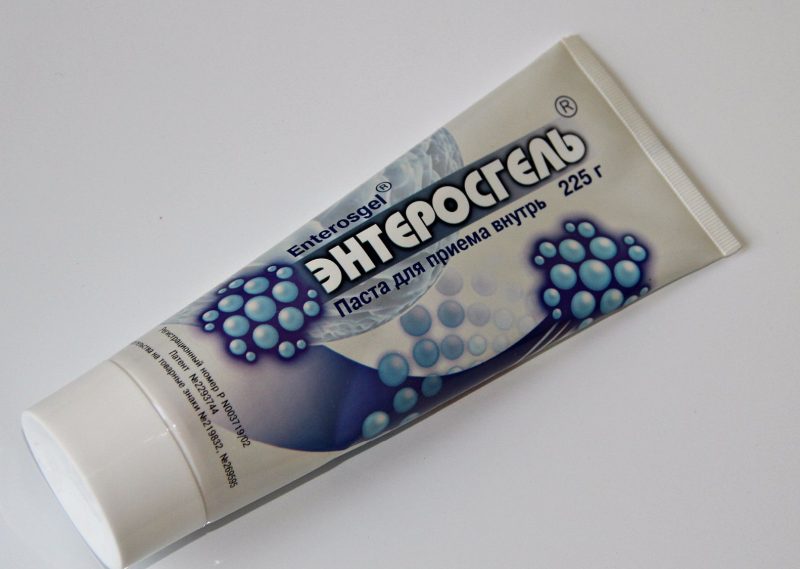
Together with particles of sorbent, excessive amounts of bilirubin, cholesterol and other endogenous substances (metabolites) are excreted. Thanks to this, the state of the intestines and the immune system is normalized, and the work of the liver is facilitated and improved.
Hydrogel absorbs compounds of heavy metals, alcohol, food allergens, medicines. Enterosorbent naturally removes some strains of viruses, pathogenic bacteria, microbial toxins from the gastrointestinal tract. Hydrogel pores are too small for macromolecules of proteins, many vitamins, enzymes, hormones, polysaccharides.
The correct treatment in most cases is not accompanied by dysbiosis, impaired motor, digestion and absorption in the intestines.
Enterosgel paste and its suspension with water do not injure the walls of the gastrointestinal tract. On the contrary, particles of the sorbent envelop the mucous membrane and protect it from the attachment of microbes. The active ingredient is not digested, is not able to penetrate the intestinal mucosa and accumulate in the body. After 12 hours, the hydrogel associated with toxins of various origins and food debris is removed from the digestive tract.
What is the drug prescribed for?
Intestinal sorbents are used for acute and chronic intoxications, allergies, and infection with parasites.

- Enterosgel is taken orally to prevent and treat poisoning with food, water, alcohol, drugs, harmful compounds.
- The drug can be used to prevent and eliminate the effects of overeating.
- The medicine is usually included in the complex therapy of dysentery, salmonellosis and other acute intestinal diseases, diarrhea of various origins.
- Enterosorbent is used for irritable bowel syndrome, dysbiosis, flatulence, toxicosis of pregnant women.
Among the indications are jaundice, viral hepatitis, renal failure, parasitic diseases. The drug is used for alcohol intoxication, drug overdose, is prescribed for patients with dermatoses, allergies, with purulent-septic processes.
The product can be taken by workers in hazardous industries in order to prevent chronic poisoning with pesticides, radionuclides or oil products.
Flatulence and stool disorders occur with an unbalanced diet, functional dyspepsia, many gastrointestinal diseases. After consuming the paste, bloating, seething, and rumbling in the abdomen caused by excess gases are reduced, diarrhea passes. Intestinal adsorbent helps to avoid side effects that accompany treatment with penicillin antibiotics, Diclofenac, antidiabetic agents.
Enterosgel instructions for use for adults and children
The paste-like product is consumed 1 to 2 hours before or 2 hours after eating / taking other medicines.

Approximate doses for patients of different ages:
- Infants up to 12 months old are added to water 2.5 g (half a teaspoon of pasta). In just a day, a baby can drink 7.5 g of the product.
- For babies from 1 year to 5 years, 5-7.5 g (from 1 tsp to 1/2 tbsp) of paste are diluted in water at one time. A day is enough to drink 15-22.5 g of the drug in three divided doses.
- Preschoolers, primary schoolchildren and adolescents (5–14 years old) can be given 10–15 g at a time (from 1 dess. Liter to 1 tablespoon), from 30 to 45 g of paste per day.
- Adolescents over 14 years of age and adults are recommended to take from 15 to 22.5 g (1 to 1.5 tbsp. L.) At a time, 45–67.5 g of the drug per day.
In severe poisoning, it is allowed to use twice the dose of Enterosgel during the first days. For prophylactic purposes, to prevent intoxication, it is recommended to take from 15 to 22.5 g of paste daily.
The duration of one course of treatment is no more than 3 weeks (to avoid constipation).
The paste-like product can be swallowed without dilution, immediately washed down with water. Instructions for use also offer the following option: mix a single dose of hydrogel with water, grind thoroughly, drink the resulting suspension.Add to 15 g or 1 tbsp. l slightly less than ¼ cup of water.
Pregnancy and lactation

Enterosgel intestinal adsorbent is prescribed for symptoms of toxicosis in early pregnancy. The tool helps to eliminate flatulence that arose against a background of hormonal imbalance, compression of the abdominal organs by the growing fetus. The drug can be used during lactation to mitigate the negative impact on the baby of the inevitable errors in the nutrition of the nursing mother.
Special instructions for taking the drug
When prescribing enterosorbent, along with other medicines, it is necessary to observe the time interval.
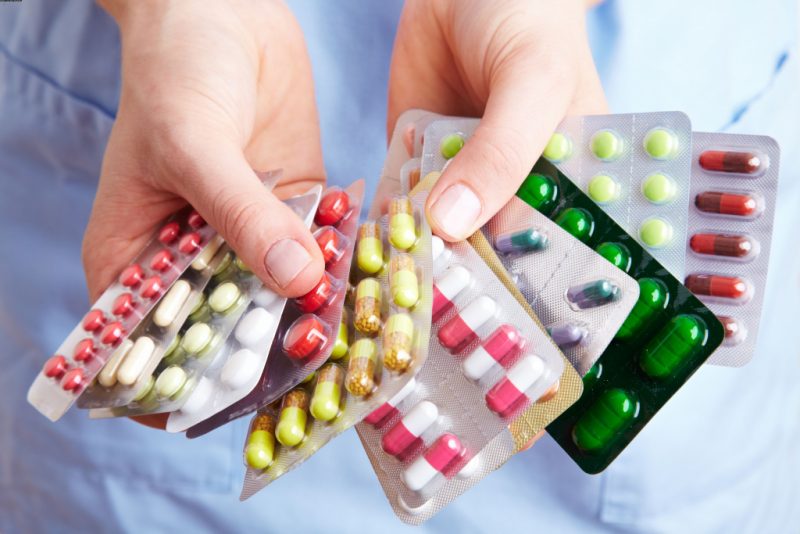
Enterosgel should be drunk 1-2 hours before, or after the same length of time after taking them. The drug is often prescribed as part of complex therapy along with anti-inflammatory, antibacterial, antihistamines.
Drug Interactions with Other Drugs

The tool "Enterosgel" absorbs many therapeutic substances in the intestines. As a result, the absorption of the drug into the blood decreases. Separate administration of enterosorbent and other drugs is recommended.
Contraindications, side effects and overdose
It is forbidden to take the drug inside with an individual intolerance to the active ingredient revealed in the patient.

Other contraindications:
- constipation arising from intestinal atony;
- bleeding in the stomach and intestines;
- exacerbation of gastric ulcer pathology;
- intestinal obstruction.
A sense of disgust, nausea, the urge to vomit, constipation are the most common side effects of treatment with Enterosgel paste.
To avoid the negative effect of the drug, you must follow the recommendations of the doctor and manufacturers of the drug, optimize the duration of the course of therapy. It is also important to drink enough water. The doctor determines the duration of the course of therapy, taking into account all factors. After treatment with an intestinal sorbent, vitamin-mineral complexes, probiotics, herbal medicine are prescribed to reduce unwanted effects.
Analogues of Enterosgel
Birch charcoal is the oldest intestinal sorbent. Numerous pores of the substance absorb gas molecules and toxins. Activated carbon has a higher sorption capacity than wood burning product. A significant drawback is the need to take 5-8 tablets at a time.
Analogues of Enterosgel (absorbent intestinal products):
- “Carbosorb”, “Karbopect”, “Sorbex”, “Ultra-adsorb” (activated carbon).
- "White coal Active" (silicon dioxide + fine crystalline cellulose).
- "Polyphepan", "Polyfan", "Filtrum-STI" (hydrolysis lignin).
- "Lactofiltrum" (lactulose + hydrolysis lignin).
- "Smecta", "Neosmectin" (dioctahedral smectite).
- Polysorb (silicon dioxide).
The effectiveness of analogues differs, since the ingredients of the products have unequal sorption properties. Differences in most cases affect the cost of drugs. The price of Russian-made Enterosgel paste (225 g) is more than 400 rubles. The cost of 10 sachets of Enterosgel and Polysorb MP for a single dose in Russian pharmacies varies from 380 to 460 rubles. The price of Polyfepan is 95 rubles, Smecta is 140 rubles. The cheapest analogues are activated carbon (from 5 to 10 rubles), “Karbopect” - 80 rubles.
Enterosgel or Polysorb - which is better?
The drugs are analogues - intestinal adsorbents with identical indications and methods of use, the same contraindications. Enterosgel contains an organic polymer, the sorption capacity of which is 150 m2 per 1 g. This property is more pronounced with the Polysorb agent. The sorption surface of finely divided silica is 300 m2 per 1 g.
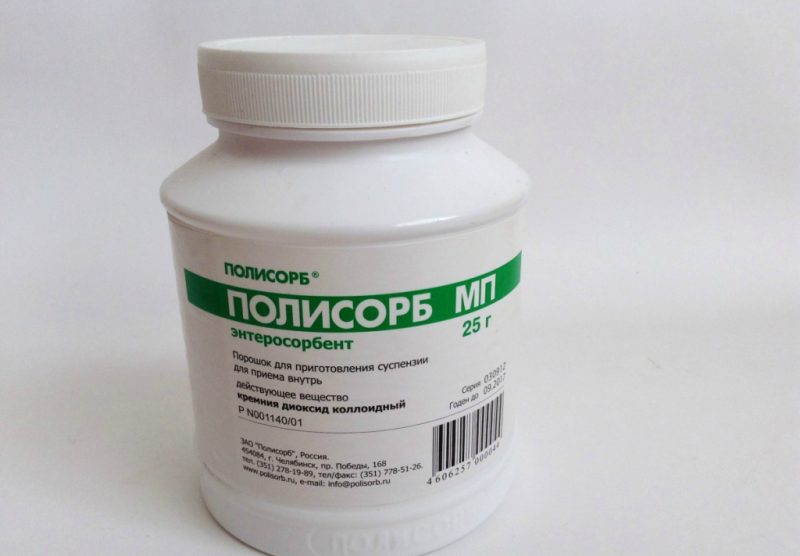
Enterosgel paste selectively absorbs toxins, poisons, metabolites and substances important for the body. This means that the drug acts in the intestine more carefully in comparison with other adsorbents. Useful compounds and microflora balance are maintained.
Enterosgel is more suitable for long-term use, use in pediatrics.
However, mothers in the reviews mention that it is difficult for the kids to swallow the paste, it causes a gag reflex. A drug with a sweet taste is better perceived. The product can be diluted with water and given to the child. When diluting the Polysorb powder in water, a sparse suspension without taste is obtained, which is easy to drink.
The final choice in favor of this or that drug should be made by a doctor - therapist, infectious disease specialist, gastroenterologist, allergist, pediatrician.



